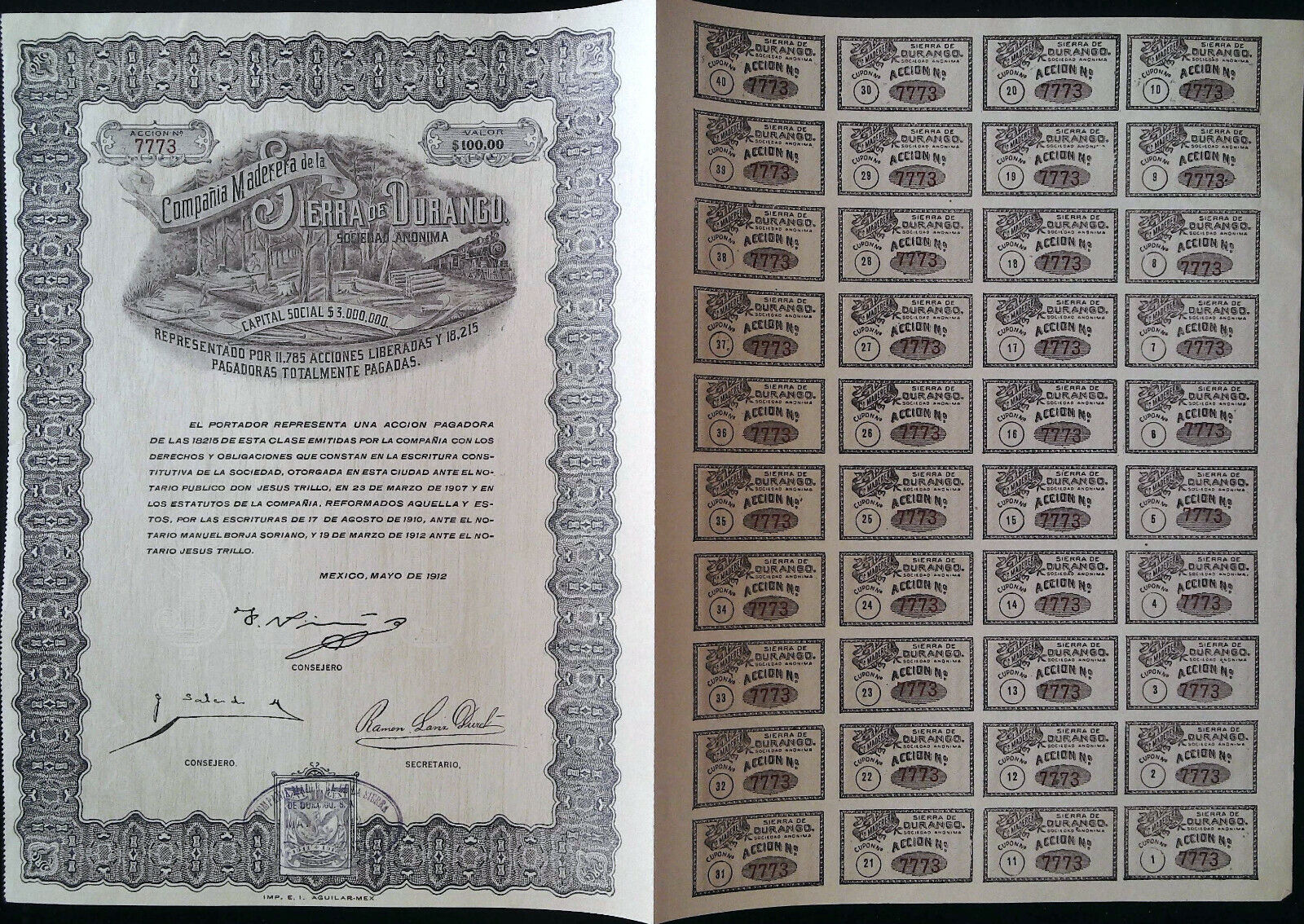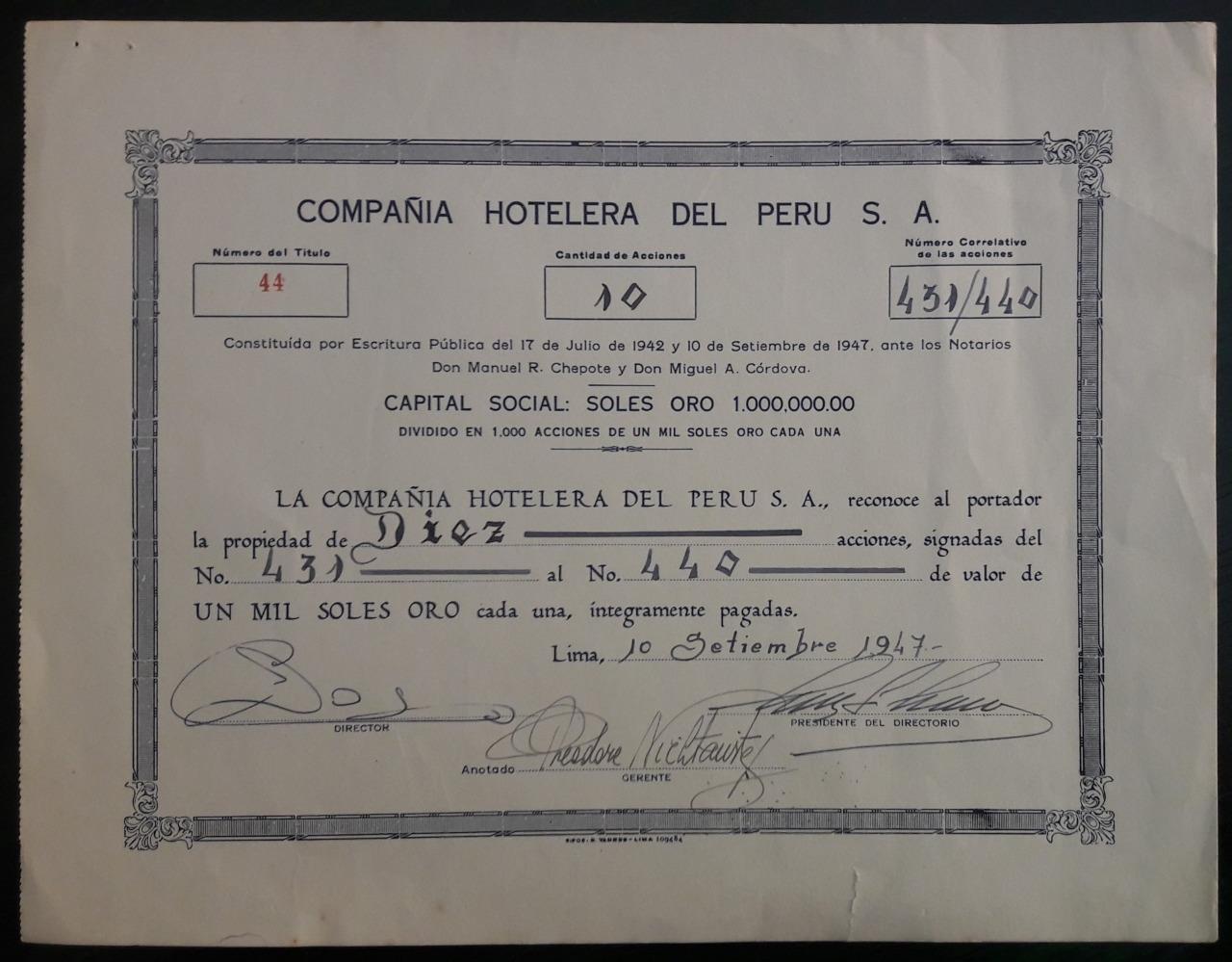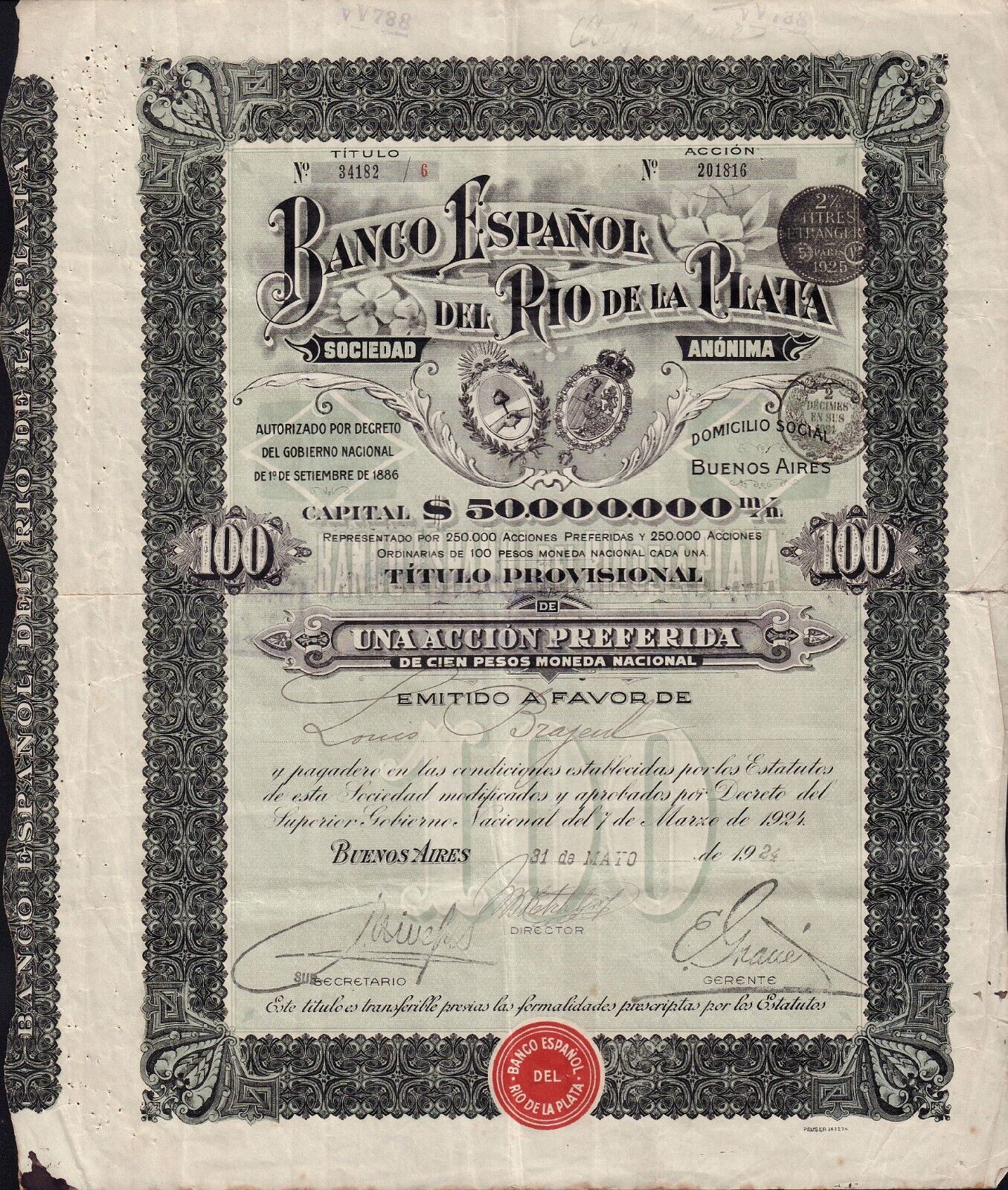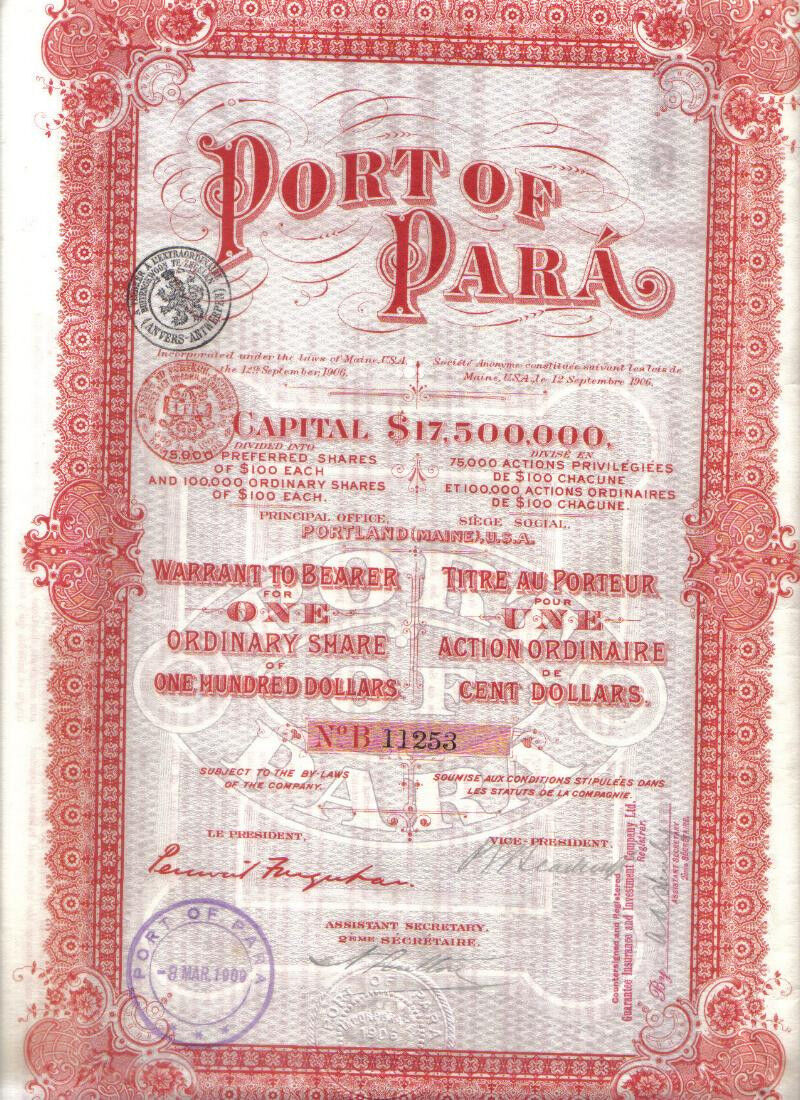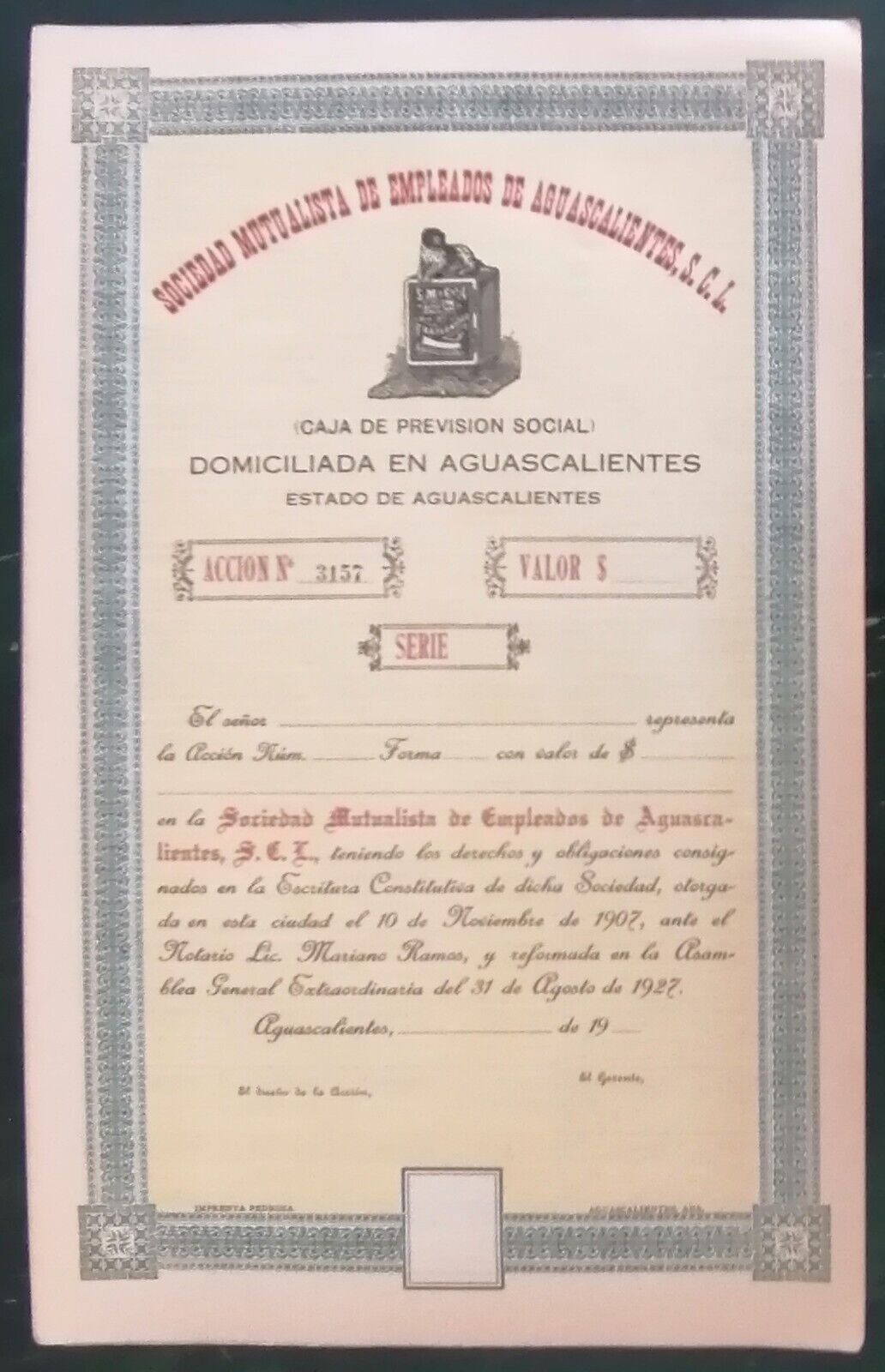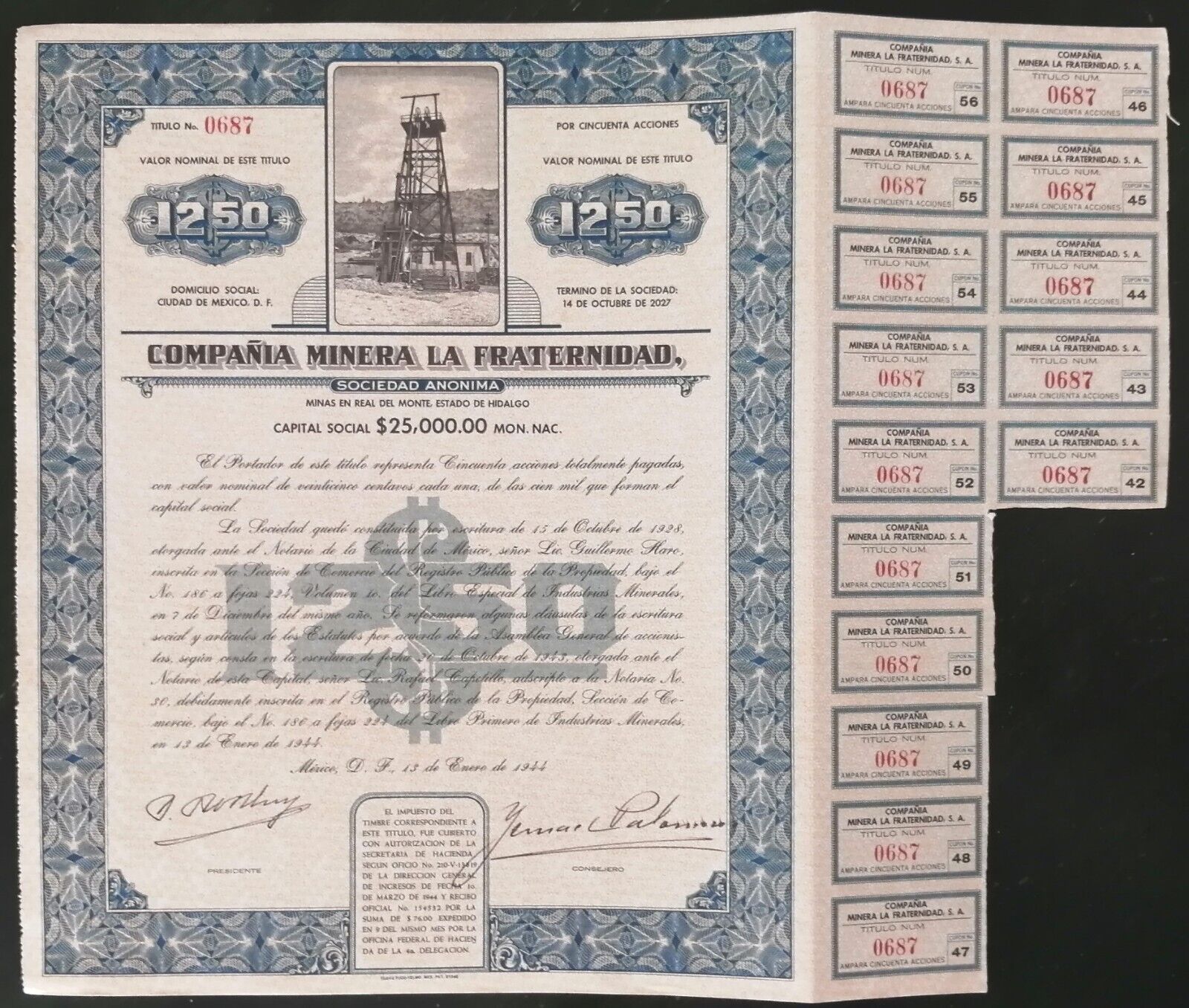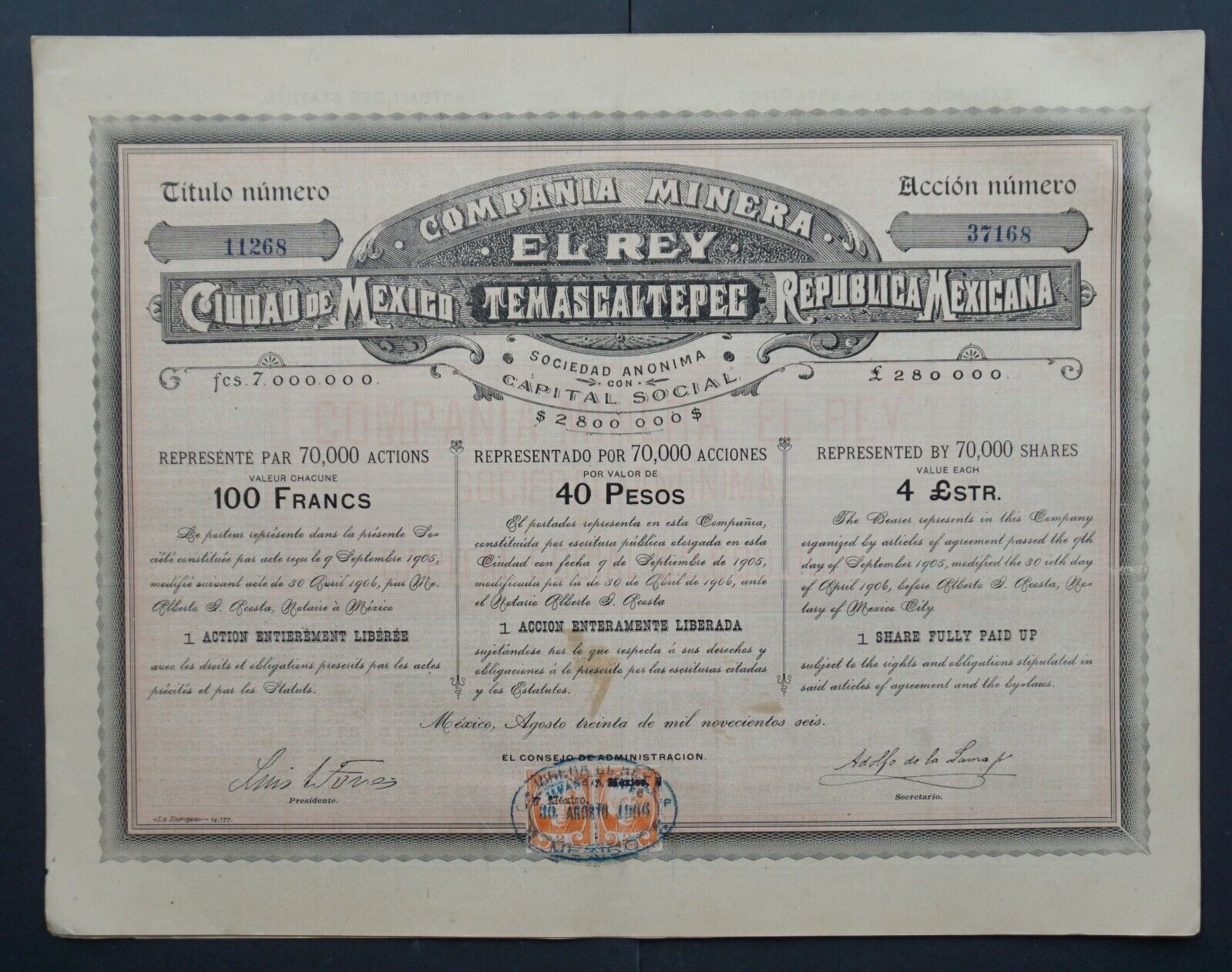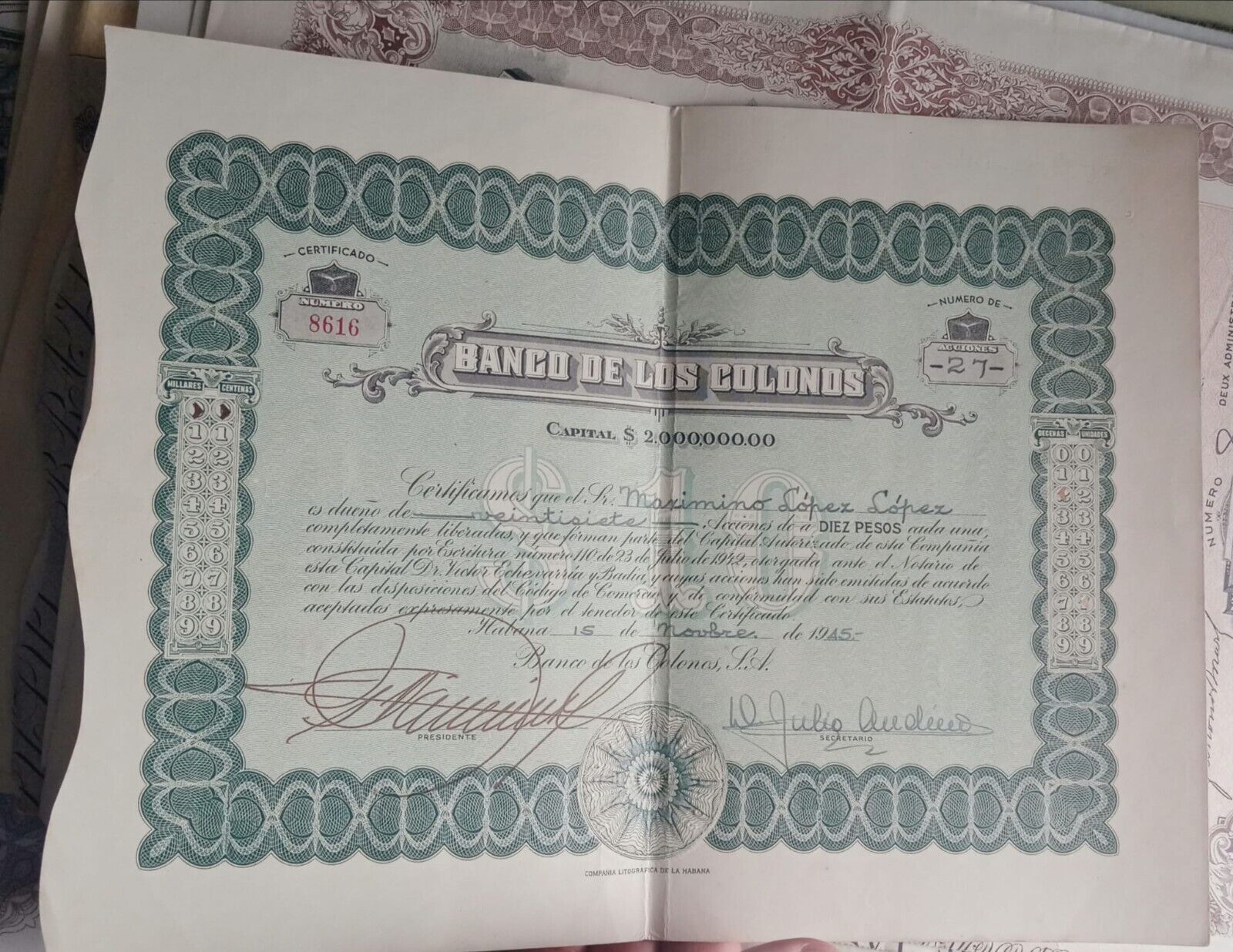-40%
Siam di Tella Automotores share certificate Argentina 1961
$ 4.22
- Description
- Size Guide
Description
One single share certificate of 10 ordinary shares of"Siam di Tella Automotores" Buenos Aires Argentina 1961
.Condition (opinion): Very Good/Fine (VG/F)
.Printer :Tamburini
.Size (main document only without coupons size) 27cm/20cm (small or average with coupons). Old document with historical, documentary, collectable or scripophilic value only.See below related information from the web.
----------------------------------------------------------------------------------------------------------------------
Use of this picture is for reference only, serial number may be different.
-------------------------------------------------------------------------
Terms of sale and shipping information
Postage, including packing material, handling fees : Europe: USD 6.10 / USA $ 7.00. Rest of the World: USD 8.10
FREE of postage for any other items.
Only one shipping charge per shipment (the highest one) no matter how many items you buy (combined shipping).
-----------------------------------------------------------------------------
Guaranteed genuine -
One
month
return
policy
(retail sales) .
Returns accepted with no questions.
Customers are invited to combine purchases to save postage.
Full refund policy ,including shipping cost, guaranteed in case of lost or theft after the completion of the complaint with Spanish Correos for the registered letters
(free of extra charges for purchases abobe .00 or with the extra charge paid for purchases below .00).
As we have (or could have) more than one identical item ,the serial number may differ from those shown in the picture which is for reference only.
For purchases above .00 we send the orders registered with tracking number without extra charge, for purchases below .00 we ship as regular letters at the buyer's risk.
For purchases below $ 70,00 who want to register your letter with tracking number, please add an extra for : Europe .50 , U.S. .50 ,Rest of the word .30 .For this case ,please request or wait for our invoice before paying.
For some destinations and purchases below .00 customers may be requested for this extra shipping payment in order to register the shipment with tracking number.
We reserve the right to cancel transactions that require the sending of unregistered letters (without tracking number) to some destinations when this extra payment has been requested.
If for any reason, your item did not arrive yet, or you are not 100% satisfied with the item you have received, please do not hesitate to contact , I will do all it takes to provide the best service.
Banknote Grading
UNC
AU
EF
VF
F
VG
G
Fair
Poor
Uncirculated
About Uncirculated
Extremely Fine
Very Fine
Fine
Very Good
Good
Fair
Poor
Edges
no counting marks
light counting folds OR...
light counting folds
corners are not fully rounded
much handling on edges
rounded edges
Folds
no folds
...OR one light fold through center
max. three light folds or one strong crease
several horizontal and vertical folds
many folds and creases
Paper
color
paper is clean with bright colors
paper may have minimal dirt or some color smudging, but still crisp
paper is not excessively dirty, but may have some softness
paper may be dirty, discolored or stained
very dirty, discolored and with some writing
very dirty, discolorated, with writing and some obscured portions
very dirty, discolored, with writing and obscured portions
Tears
no tears
no tears into the border
minor tears in the border, but out of design
tears into the design
Holes
no holes
no center hole, but staple hole usual
center hole and staple hole
Integrity
no pieces missing
no large pieces missing
piece missing
piece missing or tape holding pieces together
See below related information from the web:
Siam Di Tella is an Argentine household appliance company, the segment leader in the region.1
The company was born with national capital founded by Torcuato Di Tella in 1911. The company's original business was the manufacture of mechanical bread kneaders. Later, production diversified incorporating the manufacture of refrigerators, washing machines, kitchens, televisions, scooters, vans, automobiles, and items for the private industry and the public sector, such as oil pumping equipment, large electrical transformers, steel pipes, and generators for diesel-electric locomotives. By the 1940s, the company became the largest metalworking industry in South America.
The company was nationalized in 1972 and in 1986, during the Raúl Alfonsín government, it was dismembered and sold separately to three private business groups (Techint, Pérez Companc and Aurora).
On April 30, 2014, the Avellaneda plant was reopened. With the presence of President Cristina Fernández de Kirchner, a new stage in the history of the company began, after more than 20 years of darkness. With an investment of more than 35 million dollars, one of the iconic factories of the national industry reopens.2
Currently the company manufactures refrigerators, freezers, washing machines, dryers and air conditioners.
-------------------------------------------------
Siam Di Tella es una empresa argentina de electrodomésticos, líder del segmento en la región.1
The beginnings
In December 1910, an Italian immigrant, Torcuato Di Tella, together with the Allegrucci brothers, founded a company called SIAM (Industrial Section of Mechanical Kneaders), to manufacture mechanical bread kneaders for bakeries, because in Buenos Aires Aires manual kneading had been prohibited.
Di Tella's kneading machines had some improved details compared to those available on the world market and sold at a spectacular rate.
The success of the company encouraged its owners to expand the activity to other business areas, even manufacturing the successful SIAM electric refrigerators.
In 1948, when he was still relatively young, Di Tella passed away suddenly, leaving an industrial emporium of gigantic dimensions for Argentina at that time. It also left a great leadership vacuum. Torcuato Di Tella had strongly urged his two sons, Guido and Torcuato, to become engineers and take over the business. The two became engineers, but neither of them wanted to dedicate themselves to the company, and that represented the beginning of SIAM's decline.
In the 1950s, through an agreement with the Italian firm Lambretta, the popular scooter, known in Argentina as Siambretta, began manufacturing in Argentina.
In 1959, the integration of the company into the Automotive Promotion Regime, allows it to produce models from the British Motors Corporation under license, creating the company "Siam Di Tella Automotores S.A."
Siam Di Tella Automotores, S.A.
The car chosen to start local production was the Austin A-60, known in Argentina as Di Tella 1500. It was actually the Argentine version of the Riley 1500.
An unoccupied premises that the company owned in the Buenos Aires town of Monte Chingolo was prepared for production. The conditioning works for the 50,000 m2 complex began at the end of October 1959 and after 126 days of intensive rehabilitation work the plant was inaugurated on March 15, 1960. Two weeks later, on April 2, 1960 The first Di Tella 1500 came off the assembly line.
The demand was very important, in such a way that on September 2 unit 1,000 was produced. Production was supervised by English BMC technicians, the main objective being to improve production times to satisfy the growing demand that reached 4,000 units during the first year of production. The following year the figures tripled. New models appeared, the Argenta pick up (11,133 units were produced) and the rural version of the Di Tella 1500 called Traveler (1,915 units were produced). At the end of 1961 the company already employed 2,000 people.
Despite what is required by the political regime of the time, the manufactured units had a low index of national parts and the company was in financial difficulties to increase the percentage according to what was established by current legislation, as a consequence it had to drastically reduce their production levels. This complicated the plans for updating the models in production and the launch of new ones.
Numerous alternatives were considered to get out of the crisis and finally in March 1965 an agreement was signed with IKA for industrial complementation in the foundry, tool and tooling sections. Months later in September 1965, IKA acquired 65% of the Siam Di Tella Automotores share package. That same year the Magnette 1622, an upgraded version of the 1500, was released.
However, despite IKA's contribution, the financial difficulties continued and in January 1966 the company requested the first call for creditors. In March 1966 the SIAM designation was withdrawn from the entire production line, the 1500 and the Argenta pickup were renamed Riley, the Rural was named Morris Traveler and the Magnette 1622 simply MG.
These changes in names were accompanied by aesthetic changes in the bodies. The company also changed its name to "Compañía Industrial de Automotores S.A." (CIDASA).
In early 1967, despite the efforts and changes made, the company's fate was cast, financial difficulties continued, and suppliers had to accept vehicles as part of payment. The last units were produced in March: 5 Morris Traveler. The company's staff was suspended for a month, but was never reinstated in the end.
----------------------------------------------------------
La empresa nace con capitales nacionales fundada por Torcuato Di Tella en 1911. El negocio original de la compañía fue la fabricación de amasadoras mecánicas de pan. Posteriormente la producción se diversificó incorporando la fabricación de heladeras, lavarropas, cocinas, televisores, motonetas, furgonetas, automóviles y elementos para la industria privada y el sector público, como equipos de bombeo para petróleo, grandes transformadores eléctricos, caños de acero y generadores para locomotoras diesel-eléctricas. Para los años 1940, la empresa llegó a ser la industria metalmecánica más grande de América del Sur.
La empresa fue nacionalizada en 1972 y en 1986, durante el gobierno de Raúl Alfonsín, fue desmembrada y vendida por separado a tres grupos empresarios privados (Techint, Pérez Companc y Aurora).
El 30 de abril de 2014, se reinauguró la planta de Avellaneda. Con la presencia de la presidenta Cristina Fernández de Kirchner se dio comienzo a una nueva etapa en la historia de la empresa, luego de más de 20 años de oscuridad. Con una inversión de más de 35 millones de dólares se reabre una de las fábricas icono de la industria nacional.2
Actualmente la empresa fabrica heladeras, freezers, lavarropas, secarropas y aires acondicionados.
------------------------------
...............11.133 unidades) y la versión rural del Di Tella 1500 denominada Traveller (se produjeron 1.915 unidades). A finales de 1961 la empresa ya empleaba a 2.000 personas.
A pesar de lo exigido por el Régimen político del momento, las unidades fabricadas poseían un bajo índice de piezas nacionales y la empresa se vio en dificultades financieras para poder incrementar el porcentaje de acuerdo a lo que establecía la legislación vigente, como consecuencia debió reducir drásticamente sus niveles de producción. Esto complicaba los planes de actualización de los modelos en producción y el lanzamiento de otros nuevos.
Se barajaron numerosas alternativas para salir de la crisis y finalmente en Marzo de 1965 se firmó un acuerdo con IKA de complementación industrial en los apartados de fundición, de herramientas y de matricería. Meses más tarde en Septiembre de 1965, IKA adquirió el 65% del paquete de acciones de Siam Di Tella Automotores. Ese mismo año se lanzó el Magnette 1622, una versión mejorada del 1500.
Sin embargo, a pesar del aporte de IKA las dificultades financieras continuaron y en Enero de 1966 la empresa solicitó la primera convocatoria de acreedores. En marzo de 1966 fue retirada la denominación SIAM de toda la línea de producción, el 1500 y el pick up Argenta pasaron a denominarse Riley, el Rural se denominó Morris Traveller y el Magnette 1622 simplemente MG.
Estos cambios en los nombres se acompañaron de cambios estéticos en las carrocerías. También la empresa cambió su denominación por la de “Compañía Industrial de Automotores S.A.” (CIDASA).
A principios de 1967 y a pesar de los esfuerzos y cambios realizados, la suerte de la empresa estaba echada, las dificultades financieras continuaban y los proveedores debían aceptar vehículos como parte de pago. En marzo se produjeron las últimas unidades: 5 Morris Traveller. El personal de la empresa fue suspendido por un mes, pero finalmente nunca fue reincorporado.-
------------------



